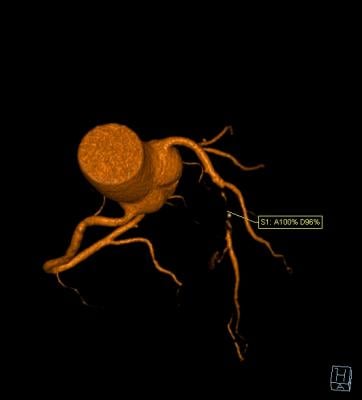November 1, 2013 — A
study supports the use of instantaneous wave-free ratio (iFR) to simplify assessment and determine the severity of coronary artery disease (CAD). ADVISE II findings were presented at the 25th annual Transcatheter Cardiovascular Therapeutics scientific symposium (TCT 2013).
ADVISE II enrolled 797 patients in a prospective, observational, non-randomized double blind global multi-center registry study with an adaptive design. The diagnostic performance of iFR was analyzed both as a dichotomous index and as part of a hybrid
iFR/FFR strategy. iFR was used according to specific cutoffs (iFR zone, ? 0.85 and ? 0.94) with high positive and high negative predictive value for the detection of hemodynamically severe stenosis. FFR use was limited to the “adenosine zone” for iFR values between 0.86 and 0.93. The primary endpoint was the percentage of stenosis properly classified in terms of hemodynamic severity (FFR value ? 0.8).
The final study population consisted of 690 stenoses and of these, 31 percent had an associated iFR value in the adenosine zone (0.86-0.93) while 69 percent had associated iFR values in the iFR zone. Within the iFR zone, the percentage of stenosis properly classified in terms of hemodynamic severity was 91.6 percent. Overall the hybrid iFR/FFR approach correctly classified 94.2 percent of coronary stenoses, without the need for adenosine administration in 65.1 percent of patients.
“The results of the ADVISE II study support the use of iFR to simplify physiological guidance of percutaneous coronary intervention,” said Javier Escaned, M.D, Ph.D., interventional cardiologist, Hospital Clinico San Carlos, Madrid, Spain, and lead investigator of the study.
“The promising results demonstrate the potential of boosting the benefits of ischemia-driven revascularization to a larger proportion of patients with coronary artery disease.”
For more information: www.crf.org


